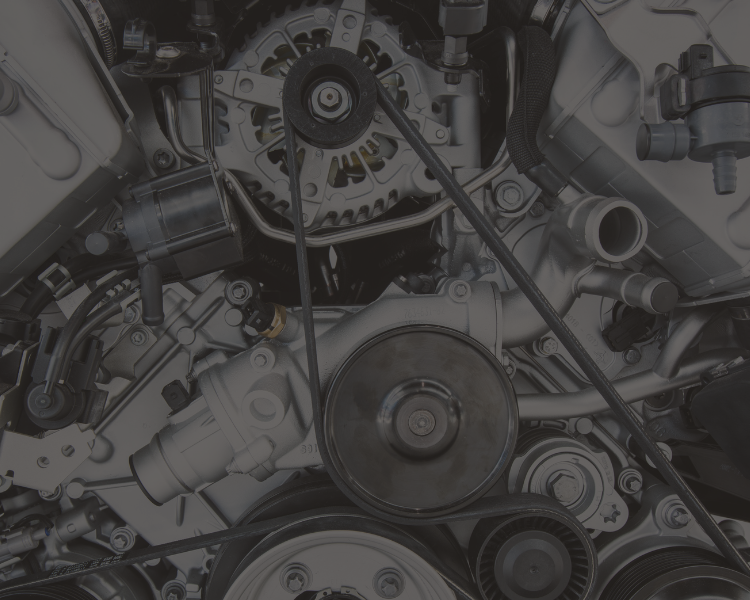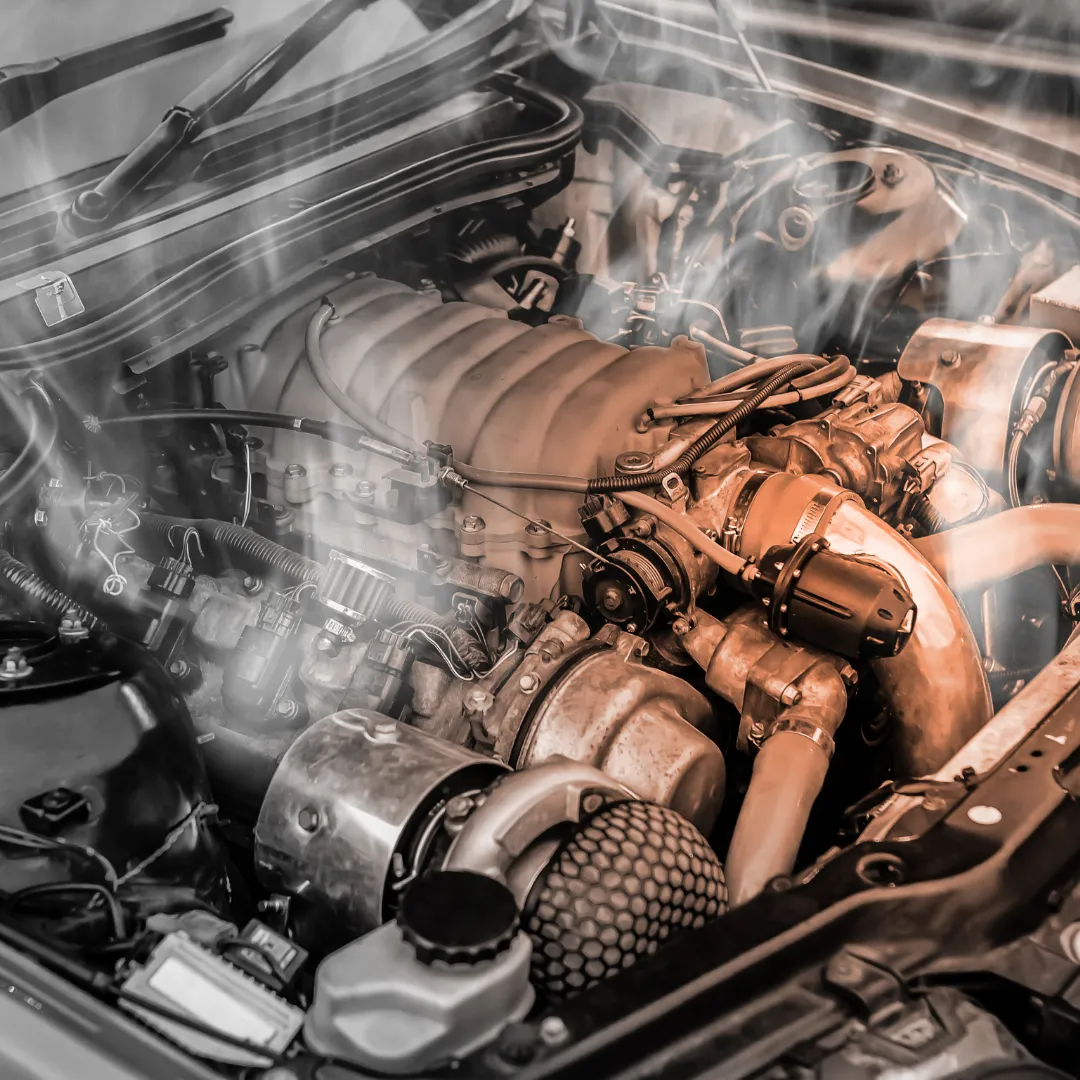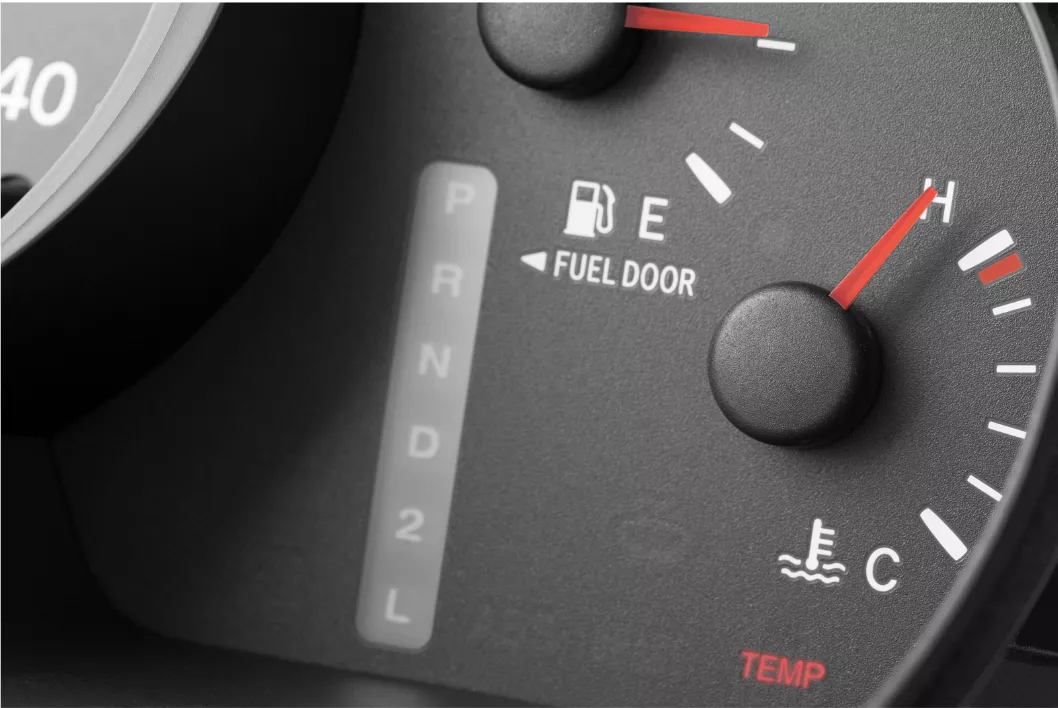How to Choose the Right Coolant for Your Car
A good amount of Hy-per Lube’s business comes from our famous Super Coolant product, and we know a thing or two about cooling system performance.
Let’s start with the basics, which a LOT of people ignore when it comes to cooling systems.
Maintenance is an essential part of owning a car. Caring for your vehicle can save you money, and can help it run for longer. Many car owners rely on regular trips to the shop to handle maintenance, such as getting the oil changed. You can help keep your car running smoothly by performing a few simple tasks at home, such as changing the car’s coolant and other fluids.
When you change the engine coolant, you perform a coolant flush. Different cars may need different coolant, but every vehicle needs a coolant flush approximately every five years or every 30,000 miles. Selecting the right coolant depends on several factors, including the age and type of vehicle. Here’s how to choose the best coolant for your wheels.
What Is Engine Coolant?
Engine coolant keeps your engine from overheating and helps you avoid a costly repair bill. Coolant helps protect your engine from extreme temperatures, both hot and cold. Your car’s engine runs hot while in use, hot enough to damage essential parts. The coolant absorbs the heat from the car’s engine and circulates back to the radiator. During the winter, extreme cold can cause your engine block to freeze and even crack. Coolant prevents both overheating and freezing. True to its name, engine coolant, aka antifreeze, does not freeze in sub-zero temperatures. Commonly referred to as antifreeze, engine coolant contains ingredients that help prevent corrosion of your car’s engine parts. Engine coolant comes in several different varieties, but its basic ingredients include ethylene or propylene glycol and water.
Your car’s radiator has a reservoir that stores engine coolant. From that reservoir, coolant flows into and circulates through the engine block, protecting your vehicle from extreme heat or cold. The coolant system works as a simple loop. A pump will send engine coolant to your engine block when the car is running. From there, the coolant will run to the car’s radiator, also called the heat exchanger, and then back to the pump. When you first start your car, allowing the engine to warm up, the coolant will bypass the radiator. As the car heats up, the coolant system valve will allow the coolant to flow through the radiator.
Why Do I Need Engine Coolant?
Engine coolant circulates through your car’s engine and radiator to help manage temperature extremes. Coolant is essential to preventing your engine from overheating. It also helps prevent your car’s engine from freezing when the mercury dips below 32 degrees Fahrenheit or 0 degrees Celsius. Your vehicle needs engine coolant to run efficiently and safely.
If you drive your car without doing an engine flush at the proper intervals, you risk expensive damage to the car’s cooling system, including the radiator, water pump and pipes. Over time, coolant becomes less effective. Rust and gunk will begin to build up and negatively impact your car’s cooling system. If you see smoke pouring out from beneath your hood, ignoring your car’s coolant needs is a likely culprit. Your car’s dashboard will likely give you a warning before it comes to that. Once your car lets you know it’s time for a coolant flush, your best bet is to replace the coolant.
Along with replacing engine coolant at the appropriate intervals, it’s also vital that you choose the right type of coolant for your car.
What Makes a Good Coolant?
An effective engine coolant keeps your car’s engine from both freezing and overheating. It can also protect your engine from corrosive elements and improve its performance. What ingredients go into high-performing engine coolant?
- Water. Most engine coolants are made with 50 percent water. Straight antifreeze does not contain water. Adding water to antifreeze, per manufacturer instructions, creates a coolant. Some car owners opt for this DIY method, while others will purchase pre-mixed coolant.
- Ethylene glycol. The main active ingredient in most engine coolant is ethylene glycol. It was first used as a coolant ingredient following World War I. This chemical is responsible for ensuring the liquid circulating through your car’s engine does not freeze in extreme cold and does not evaporate in extreme heat.
- Propylene glycol. Some engine coolants use propylene glycol instead of ethylene glycol. Propylene glycol is more viscose, which means ethylene glycol tends to have more efficient heat transfer. Propylene glycol is considered less toxic if ingested, which is a major selling point for car owners with children and pets.
- Corrosion inhibitors. Water and ethylene glycol (or propylene glycol) create the base of most engine coolants, but different additives to prevent corrosion create different types of coolant. These different ingredients can vary depending on the country of origin. For example, cars manufactured in Asia use carboxylates and phosphates as anti-corrosion agents in their engine coolant. Engine coolant for Asian-manufactured cars cannot use silicates as an anti-corrosive agent. Coolant for European cars, on the other hand, uses a mix of silicates and carboxylates in engine coolant to protect against corrosion.
One anti-corrosive is not necessarily superior to another. Different ingredients are used to solve different issues. For example, cars made in Asia have had issues with poor heat transfer. As a result, engine coolant for cars manufactured in Asia does not use coolants with silicates. Instead, phosphates and carboxylates fill the anti-corrosive role. In Europe, engine coolant had to solve a different problem. Hard water, containing the minerals calcium and magnesium, had a reaction with phosphate inhibitors in engine coolant, causing scale to form on car engines. So, engine coolant for cars made in Europe does not contain phosphates. Instead, coolant designed for European cars uses silicates and carboxylates.
While antifreeze is a common ingredient in engine coolant, it is not always present. You can use coolant additives without antifreeze to improve heat transfer efficiency within your engine. Some additives can be an effective option in straight water applications. Plus, an additive like Hy-per Cool Super Coolant is compatible with nearly any type of antifreeze you are already using for your vehicle.
What Are the Different Types of Engine Coolant?
Different types of engine coolants are specifically engineered for different types of vehicles. Coolant varieties are categorized by name and color. You should always use the variety recommended for your car. Six types of engine coolant are:
1. Inorganic additive technology (IAT)
IAT engine coolant is green. It is made with ethylene glycol with silicate and phosphates added to prevent corrosion. It’s used in older vehicles, typically cars manufactured in the United States before the late 1990s. As an older formula, it is not as efficient as some newer types of engine coolant. If your car requires IAT coolant, you will need to flush it and replace it approximately every two years or every 24,000 miles. IAT formulas contain silicates, which protect your car’s engine by inhibiting the effects of corrosion.
2. Organic acid technology (OAT)
OAT engine coolant is made with a propylene glycol base. Organic acid technology (OAT) engine coolant is usually orange in color, but it can come in other colors like dark green. Always double-check the label to ensure you do not accidentally grab a color that is a different coolant type. This coolant is typically compatible with cars manufactured by GM, Saab and VW.
Unlike IAT coolants, OAT coolants are designed for newer cars, usually, those made in the 2000s or later. OAT uses organic acid to help protect your engine from corrosion. As a more modern formulation, OAT coolant only needs to be drained and changed every five years or every 50,000 miles. Often, OAT coolant will have additional additives to help protect your car’s engine.
3. Hybrid organic acid technology (HOAT)
Hybrid organic acid technology is one of the three main categories of engine coolant, and it has several subcategories. HOAT coolant was traditionally yellow. It’s now available in a rainbow of colors. You can find HOAT coolant in yellow, orange, green, pink and blue. To make sure you’re choosing the right HOAT coolant, look at the brand name, rather than the liquid’s color.
The HOAT formulation is a combination of the OAT formulation and the IAT formulation. HOAT uses both silicates and organic acid to protect your engine and combat corrosion. It should be swapped out at the same interval as OAT coolant: every five years of every 50,000 miles. If you have a Ford, Chrysler or European car, it will likely use HOAT coolant.
4. Phosphate-free HOAT
Phosphate-free HOAT is usually turquoise in color. This NAP-free formula, made with ethylene glycol, contains organic and inorganic corrosion inhibitors to protect your engine. It does not contain phosphates, such as nitrite, nitrate and borate. It is also a low-silicate formula.
Phosphate-free HOAT can be used with BWW, Volvo, Tesla, Mini, Audi, Jaguar, Mercedes, Porsche, Rolls-Royce, Saab, Volkswagen and many other types of cars. The phosphate-free formulation is made with the safety of your car’s gaskets and seals in mind.
5. Phosphated HOAT
Phosphated HOAT uses phosphates and organic acids to inhibit the corrosion of your engine’s parts. The coolant is usually either pink or blue.
Phosphated HOAT coolant is usually recommended for use in vehicles manufactured in Asia, such as KIA, Honda, Hyundai, Nissan and Toyota vehicles. Due to heat transfer issues, Asian car manufacturers require the use of this type of coolant. The coolant uses carboxylates and phosphates, rather than silicates, to inhibit corrosive action in your car’s engine.
6. Silicated HOAT
Silicated HOAT is usually recognizable by its vibrant purple color. It uses silicates and organic acids to inhibit corrosive action in your engine. Its formula is free of nitrites, nitrates, phosphates, borates, amines and imidazole. Instead, it uses silicate, organic technology.
The coolant offers protection for five years or 150,000 miles in the case of light application. In the case of heavy applications, this formula protects for three years or 300,000 miles. Silicated HOAT is a premium engine coolant used in cars such as Mercedes-Benz, Audi, VW, Porsche, Bentley and Lamborghini.
If you are committed to DIY engine coolant maintenance, make sure you keep track of your miles and your time. Proactive maintenance means a happier car, a happier driver and a happier wallet.
Note, if your car has been retrofitted with newer or different parts, this could affect the type of coolant it needs. Always do your research to ensure your car is kept in the best running condition as possible.
What Is the Best Coolant for My Car?
The best engine coolant for your car depends on the vehicle type, age and place of manufacture. Know the make and model and year of your vehicle will help you select the right coolant. Choosing the wrong product can result in poor performance or worse instant engine failure. Follow these tips to make sure you make the right choice
Check the Color
Different colors of coolant correlate with different car compatibility. For example, IAT coolant is typically green and HOAT coolant is usually turquoise. But, keep in mind that color isn’t always a completely accurate indicator of the right coolant for your car. There are other brands designed for specific car types and country of origin, which can have a variety of colors that can be confusing. Use color as a guideline, but always make sure to read the bottle to validate the coolant’s compatibility with your car.
Go to the Source
Your car’s owner’s manual provides a wealth of information. It will tell you what type of coolant is best to use in your vehicle. If you don’t have a copy of your owner’s manual, you can most likely find the information you need online. The formulas suggested at your dealership and your owner manual will probably be original equipment manufacturer (OEM) approved, but there are likely aftermarket equivalents to choose from as well.
Don’t Forget the Water
When you are changing your car’s coolant, always read the bottle to see if the formula needs to be mixed with water. Some types of coolant can be poured straight into your car’s system with no additive, but other types are designed to be a 50/50 mix with water. Softened tap water will do the trick
Your car’s performance matters to you, so be precise when measuring out the ratio. Creating a coolant that is either too weak or too strong can result in poor performance. Your car type may dictate whether pre-diluted or coolant that you can dilute yourself is best.
Here’s a quick tip if you ever find yourself in an emergency. If your car’s coolant level is low, you can use water to help you make it to the nearest auto shop or gas station.
How Can I Best Protect My Car’s Engine?
Whatever coolant your car needs, you can trust Hy-per Lube’s tested and trusted products to help enhance engine protection and performance. We stand by our products with a 100 percent satisfaction guarantee, and we are a known name in the industry when it comes to cooling systems and lubrication. Our coolant products are:
1. Hy-per Cool Radiator Cleaner and Super Flush
Hy-per Cool Radiator and Super Flush is a professional-grade formula that is compatible with all gasoline and diesel engines. The coolant can safely clean and protect your engine within 30 minutes. The heavy-duty formula is safe to use on all cooling system parts, including plastic and aluminum. Hy-per Cool Radiator and Super Flush effectively removes rust, scale, residue and solder bloom.
Unlike many coolants, our formula also contains water pump lubricant and corrosion inhibitors, helping keep your engine cleaner going forward. This formula is an effective solution, whether you need to perform a light engine flush or a full cleaning.
Using Hy-per Cool Radiator Cleaner and Super Flush is a simple process with just a handful of steps. A single bottle treats systems as large as 16 quarts.
2. Diesel Super Coolant
Diesel engines run hot, which means they need a strong coolant to manage that temperature. Hy-per Lube’s Diesel Super Coolant, a supplemental coolant additive (SCA), is designed to protect modern, turbocharged and intercooled diesel engines. Drivers who are into motorsports and off-roading will find this coolant to be the ideal solution to increase heat transfer and reduce engine part temperature. Independent testing has shown this super coolant reduces temperatures by up to 9 degrees Fahrenheit. A 50/50 mix of glycol and water results in an engine temperature of 388 degrees, while that mix with super coolant added results in an engine temperature of 379 degrees. Using just water translates to an engine temperature of 382 degrees, while a mix of water and supper coolant reduces that temperature fo 358 degrees.
The SCA is compatible with any standard diesel engine coolant. Our Diesel Super Coolant not only enhances the power of your regular coolant, but it also increases fuel economy (by 1 percent to 2 percent), boosts power and acceleration and protects against corrosion. You can trust your vehicle to perform at its best thanks to Diesel Super Coolant.
A single bottle of Hy-per Lube’s Diesel Super Coolant can be used to treat 16- to 26-quart systems. Use a single bottle with 50/50 antifreeze coagulant. If your cooling system uses straight water, add two ounces of Diesel Super Coolant for each quart of the system’s capacity.
3. Hy-per Cool Super Coolant
Hy-per Cool Super Coolant is our #1 most popular engine coolant system additive with a proven track record. Independent testing has shown that this additive can reduce engine temperatures by up to 25 degrees Fahrenheit. A 50/50 mix of antifreeze and water results in a temperature of 230 degrees, while a 50/50 mid and super coolant results in a temperature of 222 degrees. Water only results in a temperature of 219 degrees, while a mix of water and super coolant results in a decreased temperature of 194 degrees.
Hy-per Super Coolant is compatible with nearly every type of engine coolant, so drivers of practically any vehicle can enhance their engine protection and performance. The additive not only helps to lower engine temperatures, but it also increases horsepower and improves engine warm-up in cold environments.
A single bottle of Hy-per Super Coolant can treat 12- to 20-quart systems. If your cooling system is larger or smaller than that, use one ounce of the additive for each quart of the system’s capacity.
Whether an experienced DIY mechanic or a new car care enthusiast, you obviously care about your car. That means you will need the right supplies to change your engine coolant. Hy-Per Lube has different types of coolant additives that drivers want to ensure maximum performance from their cars. We also have knowledgeable staff available to answer your questions. With locations in the United States and Canada, you can trust Hy-per Lube to be there for you and your car. We work with national retailers including Advance Auto Parts, AutoZone, O’Reilly and Walmart. Find the nearest store location that sells our products to keep your engine protected and your car running smoothly.




